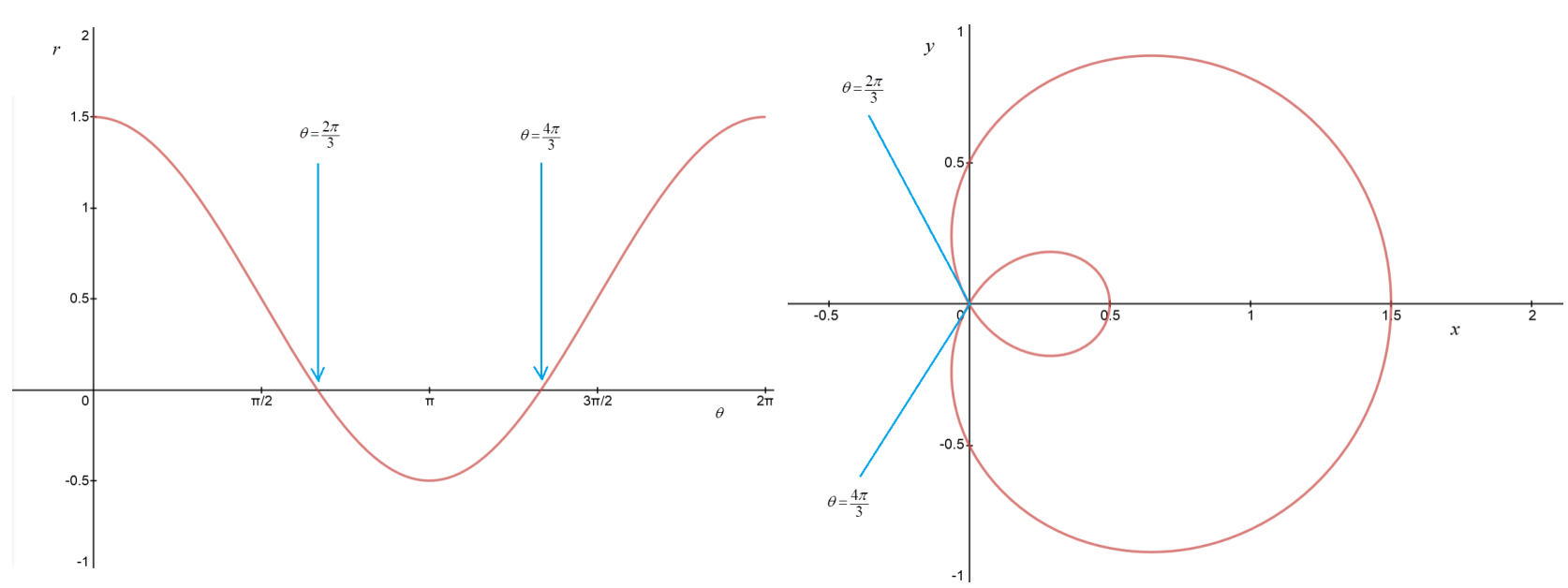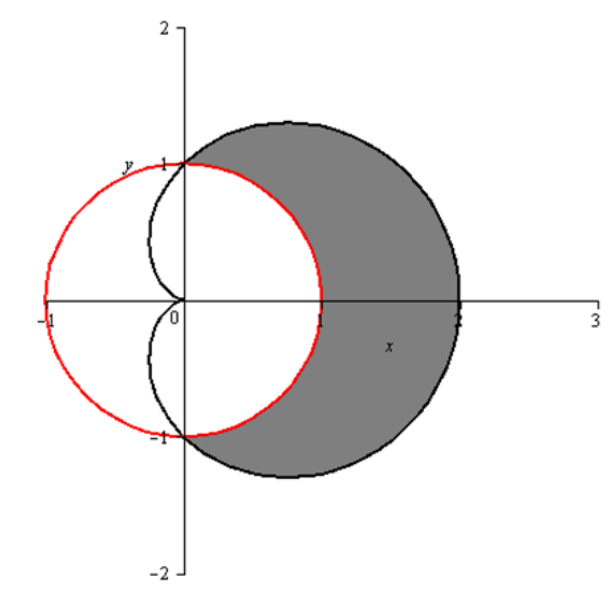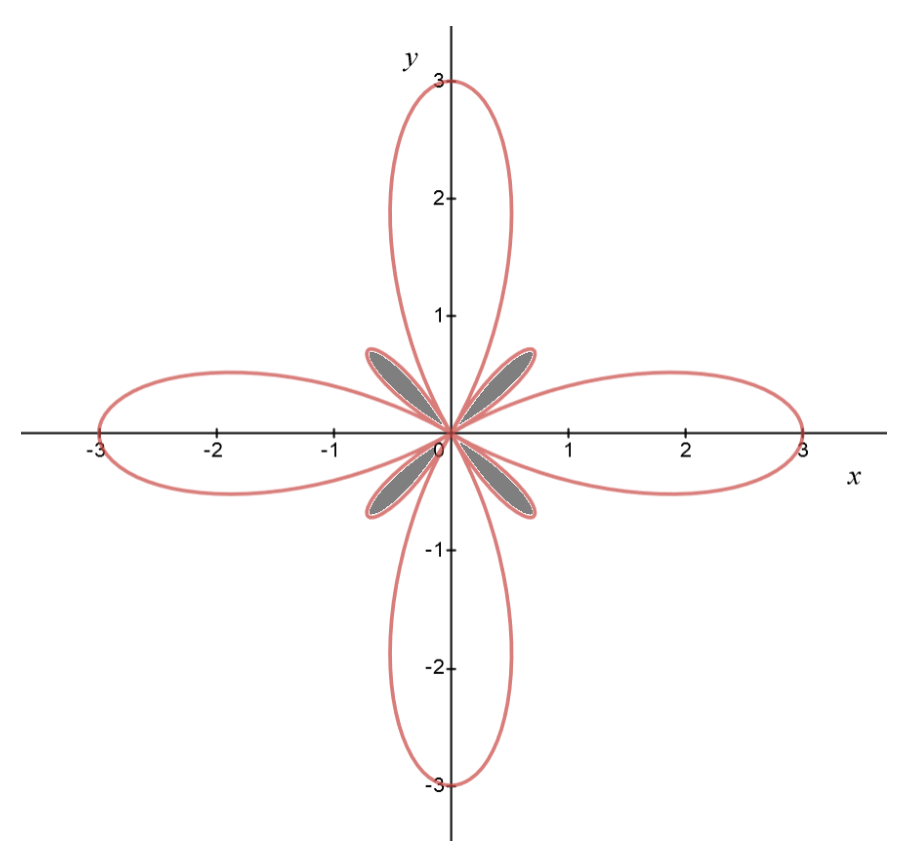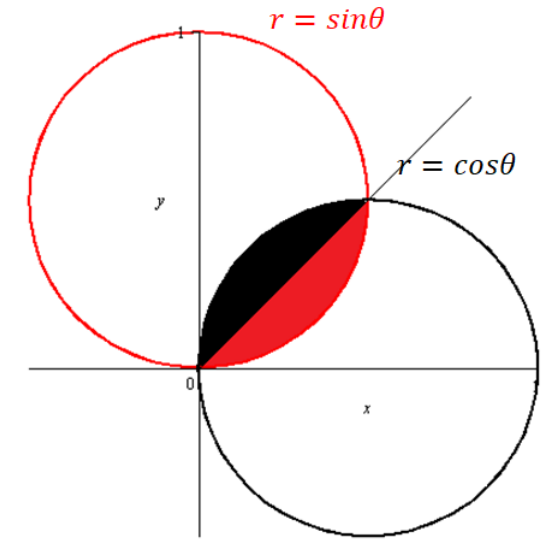Polar curves
Converting to polar: pi-correction
Compute the polar coordinates of
Solution
For
Next compute:
This angle is in Quadrant IV. We add
The radius is of course
For
Next compute:
So the point in polar is
Shifted circle in polar
For example, let’s convert a shifted circle to polar. Say we have the Cartesian equation:
Then to find the polar we substitute
So this shifted circle is the polar graph of the polar function
Calculus with polar curves
Finding vertical tangents to a limaçon
Let us find the vertical tangents to the limaçon (the cardioid) given by
Convert to Cartesian parametric.
Plug
Compute
Derivatives of both coordinates:
Simplify:
The vertical tangents occur when
Set equation:
Solve equation.
Convert to only
Substitute
Solve:
Solve for
Compute final points.
In polar coordinates, the final points are:
In Cartesian coordinates:
For
For
For
Correction:
is a cusp.
The point
Still, the left- and right-sided tangents exists and are equal, so in a sense we can still say the curve has vertical tangent at
Length of the inner loop
Consider the limaçon given by
Solution
The inner loop is traced by the moving point when 
Therefore the length of the inner loop is given by this integral:
Area between circle and limaçon
Find the area of the region enclosed between the circle
Solution
First draw the region:

The two curves intersect at
Area of small loops
Consider the following polar graph of 
Find the area of the shaded region.
Solution
Bounds for one small loop.
Lower left loop occurs first.
This loop when
Solve this:
Area integral.
Arrange and expand area integral:
Simplify integral using power-to-frequency:
Compute integral:
Overlap area of circles
Compute the area of the overlap between crossing circles. For concreteness, suppose one of the circles is given by
Solution
Here is a drawing of the overlap:

Notice: total overlap area =
area of red region.
Bounds:
Apply area formula for the red region.
Area formula applied to
Power-to-frequency:
Double the result to include the black region: